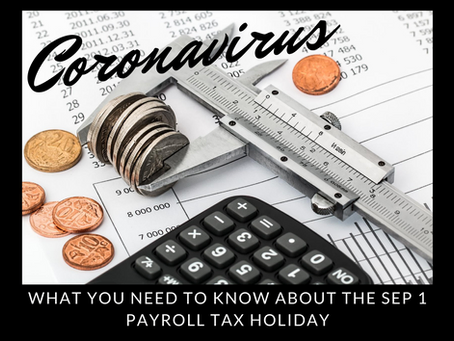On September 1, 2020, the Payroll Tax Holiday took effect. There’s a lot of confusion around what it is and how it works, so I’m going to clear that up now.
Here’s the skinny on President Trump’s deferred payroll tax plan:
- The plan defers payroll taxes (not eliminates, forgives, or cancels)
- Only the 6.2% tax that employees pay towards Social Security is deferred (not all payroll taxes, and no income taxes.)
- It only impacts employees (not those without jobs), and only if their employer has opted into the plan. Employers can participate if they want. If your employer decides to participate, you cannot opt out.
- Takes place from Sep 1, 2020 through Dec 31, 2020
- Federal employees will be opted in
- Applies only to employees or federal employees making less than $4,000 per paycheck (biweekly)
- This tax must be repaid. If your employer opts in, then your employer will collect additional (double) Social Security tax amounts from employees’ paychecks starting Jan 1, 2021 through April 30, 2021.
- If you don’t or can’t pay back the taxes owed on time (by April 30, 2021), you will be subject to penalties and interest
Here is what we still don’t know:
- We don’t know whether or how many employers will actually participate. So far, complications and uncertainty have been so problematic that few businesses have expressed any interest.
- We don’t know whether these taxes will ultimately be forgiven. As it stands now, this is only a deferral.
So: what do you do with this information? Here is what I strongly recommend:
If your employer participates in the deferral, set this money aside in savings. Do not touch it. Because come Jan 1, you will have to pay double your regular Social Security tax rate, and if you can’t afford to do so, you’ll have to pay interest and penalties on the amount still owed if it’s not paid back on time.
Rachel Richards is a former financial advisor and bestselling author. ,You can download her free budgeting and net worth worksheets here.



